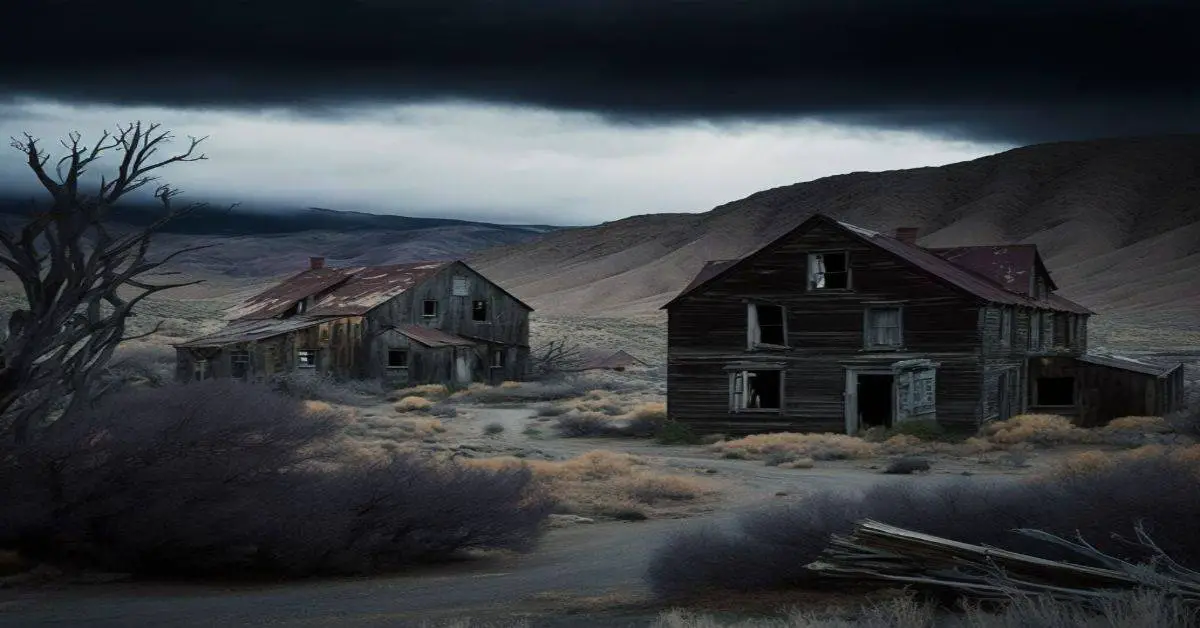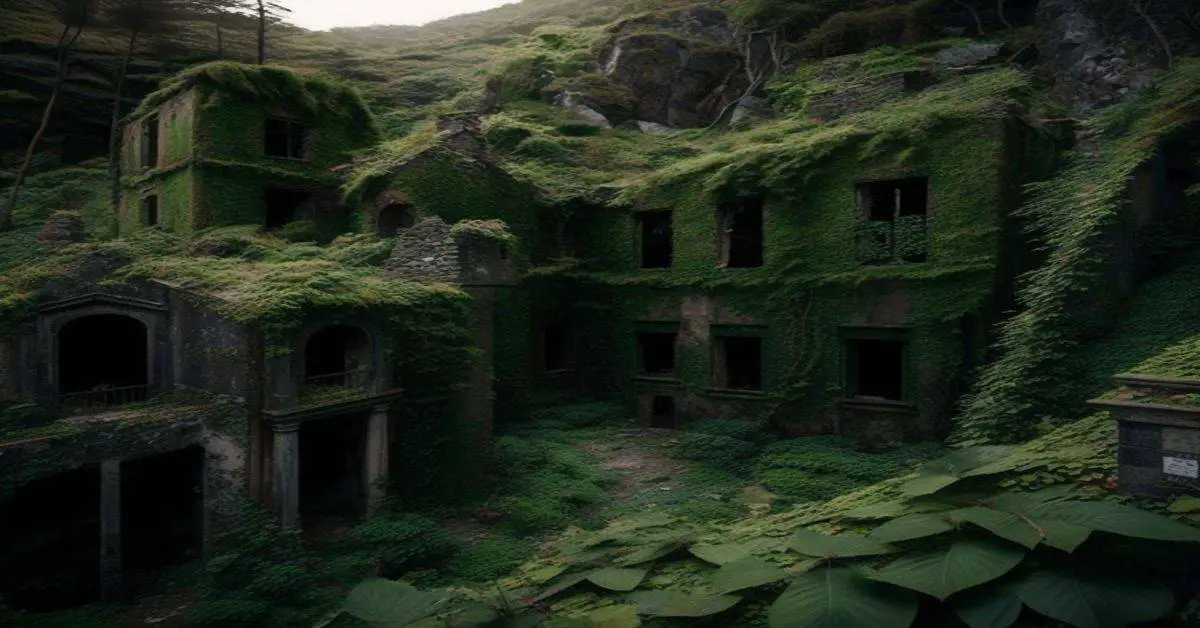Caliente, NV is a semi-ghost town located in the heart of Nevada with a rich and fascinating history.
Originally known as Culverwells Ranch and later Clover Junction, the town was named after hot springs owned by Charles Culverwell.
It was settled by ranchers, including a Mormon bishop named Klingensmith, and became a hub for the Union Pacific’s Salt Lake Route.
Despite being hit by massive floods in 1906 and 1910, many original buildings still remain, including the Culverwell Hotel which still operates hot mineral baths.
Rolling hills, desert landscapes, and hot springs characterize the geography of Caliente.
The town’s location in central Nevada has made it an important transportation hub throughout its history.
It is situated along the Union Pacific Railroad, which was crucial in the town’s development.
The area’s hot springs have also played a significant role in its history, attracting settlers and visitors alike.
Today, Caliente remains a unique and charming destination for those interested in exploring the history of the American West.
Key Takeaways
- Caliente is a semi-ghost town in Nevada that has a rich history of ranching, railroad, and floods.
- The town was originally known as Culverwells Ranch and later Clover Junction, before being named after hot springs owned by Charles Culverwell.
- Many of the original buildings still remain, including the Culverwell Hotel which still operates hot mineral baths and the Old Caliente Railroad station which now houses the city government offices and library.
- Massive floods hit the canyon in 1906 and 1910 causing significant damage to the town and railroad, with equipment and cross-ties found floating in the Colorado River after the 1910 flood.
Location and Geography
Located in the semi-ghost town of Caliente, Nevada, the junction of Meadow Valley Wash and Clover Creek was a significant location for the Union Pacific’s Salt Lake Route. The town’s geography made it a prime location for ranching and railroad history.
The Meadow Valley Wash, a tributary of the Muddy River, flowed through the town, providing water for crops and livestock. The town’s location also made it vulnerable to devastating floods, such as the ones in 1906 and 1910. Despite the damage caused by these floods, the town remained resilient and continued to thrive.
The Union Pacific played a significant role in the town’s history, as it was a major transportation hub for the area. The railroad’s tracks ran through the town, connecting it to other parts of Nevada and beyond. The town’s location at the junction of Meadow Valley Wash and Clover Creek also made it an important stop for the railroad.
The town’s rich history and unique geography make it a fascinating place to explore and discover.
History and Settlers
The early settlers of the semi-ghost town in Nevada were primarily ranchers, with many being Mormon settlers. Among them was a Mormon bishop named Klingensmith who played a vital role in the town’s development.
The town’s original name was Culverwells Ranch, named after Charles Culverwell, who owned hot springs in the area. Later on, the settlement was renamed Clover Junction to reflect the junction where the Meadow Valley Wash and Clover Creek met.
The hot springs owned by Charles Culverwell became a significant attraction for visitors, and the town’s popularity grew as a result. The post office opened on August 3, 1901, and the town’s population gradually increased.
Despite the town’s growth, Caliente faced significant challenges, such as massive floods in 1906 and 1910 that caused significant damage to the town and railroad. However, the town continued to thrive, and it was dubbed the Rose City because of Thomas Dixon’s fine rose garden.
Today, the town remains semi-ghost with a rich history of ranching, railroad, and floods.
Buildings and Floods
Remaining structures in Caliente tell of a town that has experienced both the prosperity of hot springs and the devastation of massive floods. The Culverwell Hotel, which still operates hot mineral baths, is a testament to the town’s origins as a hot springs resort.
The Old Caliente Railroad station, now housing the city government offices and library, is a reminder of the town’s importance as a junction on the Union Pacific’s Salt Lake Route.
Houses on Company Row, which is now a highway through town, give a glimpse into the lives of the town’s early settlers.
However, Caliente’s history has not been without its challenges. Massive floods hit the canyon in 1906 and 1910, causing significant damage to the town and railroad. The impact of these floods on the local economy cannot be overstated. Equipment and cross-ties were found floating in the Colorado River after the 1910 flood.
Despite the challenges, Caliente has persevered and continues attracting visitors who learn about the town’s rich history, including ongoing efforts to restore the Culverwell Hotel.
Frequently Asked Questions
What other industries besides ranching and railroad played a role in Caliente’s history?
Mining and tourism were significant industries in Caliente’s history, with the town’s growth and development being influenced by the abundance of natural resources. Exploiting minerals and promoting hot springs as a tourist attraction contributed to the town’s economy.
Was there any notable event or person associated with Caliente’s history?
Notable figures in Caliente’s history include the first elected mayor, Thomas Dixon, and Mormon bishop Klingensmith who settled in the area. Historical events include devastating floods in 1906 and 1910 that caused significant damage to the town and railroad.
Are there any local legends or ghost stories surrounding the town?
While there is no official record of local folklore or ghost stories surrounding Caliente, some visitors have reported experiencing paranormal activity at the Culverwell Hotel. There are no organized ghost tours or paranormal investigations in the area.
What is the current economic situation of Caliente and how has it changed over the years?
Caliente’s economy relies heavily on tourism, with the Culverwell Hotel and historic railroad station attracting visitors. Exploring job opportunities beyond tourism may be challenging. The town’s economic situation has fluctuated and remains vulnerable to external factors.
Are there any unique traditions or festivals celebrated in Caliente?
Caliente hosts the Labor Day Rodeo, attracting visitors from all over Nevada. The town also celebrates the annual Christmas Tree Lighting and Parade. Local cuisine, arts, and crafts are at the Farmer’s Market and Art Walk.


